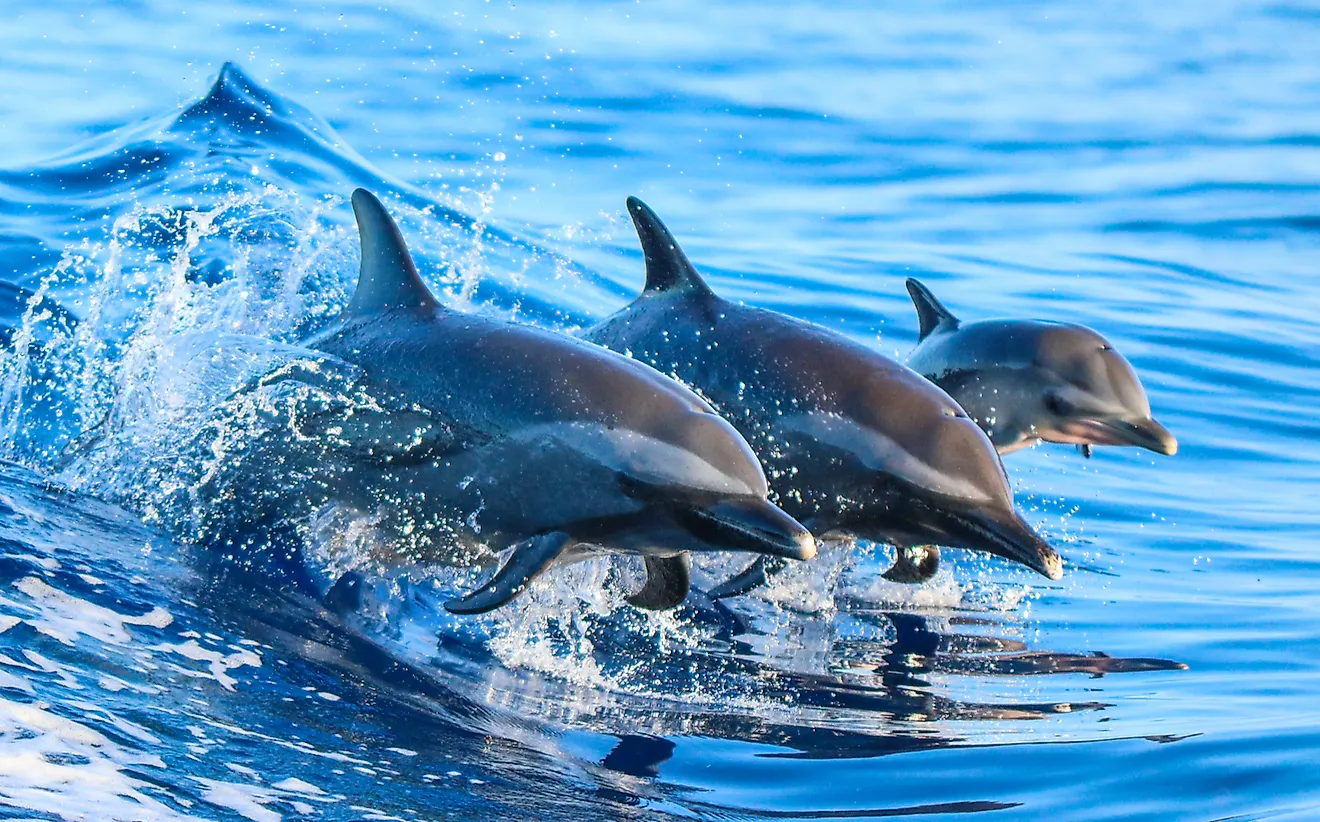10 Facts About Dolphins

Dolphins are some of the most spectacular animals on the planet. Scientists agree that they are extremely intelligent and complex. Their social skills with individuals within their species but also with humans is simply extraordinary. Dolphins seem to share many emotional components with humans, which may be one of the main reasons why we are so fascinated with them. Given the number of different dolphin species around the world, it is no wonder that there are so many interesting facts about them. Here is the ten we found most impressive.
Are Dolphins Mammals or Just Large Fish?
Dolphins are not fish, and they differ from them in a myriad of ways. Even though they look similar in their physical appearance and their habitat, dolphins cannot survive underwater without frequently coming up for air. If they were not able to come to the surface to get air, they would drown as easily as a human would. Fish do not need to surface as they can extract the required oxygen directly from the water. Dolphins have tails as fish do, however, since they have evolved from mammals that lived on land and had legs, their tails move in an upward-downward motion.
Are Dolphins The Same As Porpoises?
Not really, no. Dolphins are typically larger than porpoises who are usually less than 8 feet long. Dolphins also tend to be more slender, have a bigger head, and a larger beak (some porpoises have no beak or fin). Another significant difference between these two species is the shape of their teeth: dolphins have cone-shaped teeth while porpoises have teeth that resemble a spade.
What Are Dolphin’s Preferred Habitats?
Dolphins can be found in pretty much any ocean or sea in the world. Some of them can be seen in specific rivers also. Their preference for a particular habitat varies as some like to occupy the waters near the coast, while others will often come into shallow waters but will live further from the coast. The only species of dolphins that live in Antarctic and Arctic oceans are orcas that have enough protection to withstand the freezing waters. Considering that they are warm-blooded animals, the majority of dolphins are partial to tropical, warm waters that allow them to regulate their body temperature efficiently.
Has Any Dolphin Species Gone Extinct?
Sadly, yes. The Yangtze River dolphin (in China), also known as the baiji, is considered extinct. These dolphins are the first species of either whales or dolphins to go extinct, and the sole reason, as it is most of the time, is us: humans. The galloping rise in population density and China’s industrialization has resulted in this sad fact. In 2006, there was an international expedition in search of the Yangtze River dolphins, which lasted for six weeks. It was their goal to track down any remaining individual, but unfortunately, the search was futile.
Which Dolphin Is The Most Endangered?
The Spanish ‘vaquita’ (little cow) is currently the most endangered porpoise. It is also the smallest variety in the world. They only live in the waters near the Mexican coast, right of the Gulf of California. The reports say that there are only 30 of these animals left, which means that they could become extinct at any moment. The leading cause of their endangerment and such a low count are the fishing nets in which they get tangled and die.
How Do Dolphins Raise Their Young?
Being warm-blooded animals, dolphins nurse their young as other mammals do. They are polygamous, which means that they typically have more than one mating partner but will only produce one offspring per mating. While it varies among the dolphin species, the young can stay with its mother for up to six years before she stops caring for it.
What Are The Biggest Threats To Dolphins Today?
Even though people have hunted dolphins in the past for a variety of reasons (usually for their meat), their biggest modern threat is getting caught in fishing nets, in which they drown. This happens due to their need to surface for air during which they get tangled in the nets and are unable to get air. Aside from that, climate change consequences have also affected dolphins negatively, hindering their numbers and survival abilities.
How Do Dolphins Communicate?
When dolphins are swimming and navigating the open waters, they will use clicking sounds that also help them with locating their prey. Dolphins speak to one another by producing different vocalizations. When communicating with other dolphins they will use whistling, but also loud bursting sounds when they need to chase off a predator like a shark. They will use similar sounds when they feel excited too!
How Exactly Do They Navigate The Open Waters?
Dolphins use their biological sonar to estimate their location in reference to other animals or objects under the water. It is also called echolocation, as they emit high-pitch clicks, which in turn bounce of the surfaces in the environment and inform the dolphins of the object’s shape, size, distance, and other parameters. Echolocation also allows dolphins to trap and catch their prey.
What Is A Superpod?
A pod is a name for a group of dolphins living together. There can be anywhere from a couple dozen to couple hundred of dolphins in one pod. It allows them to catch prey more efficiently, escape from predators (power in numbers, right?) but also to care for the individuals that might be hurt or ill. Sometimes different pods merge and form a superpod that contains over 1000 dolphins. These enormous pods are usually only short-term as they occur when they come across areas that contain copious amounts of food, so there is no competition.











